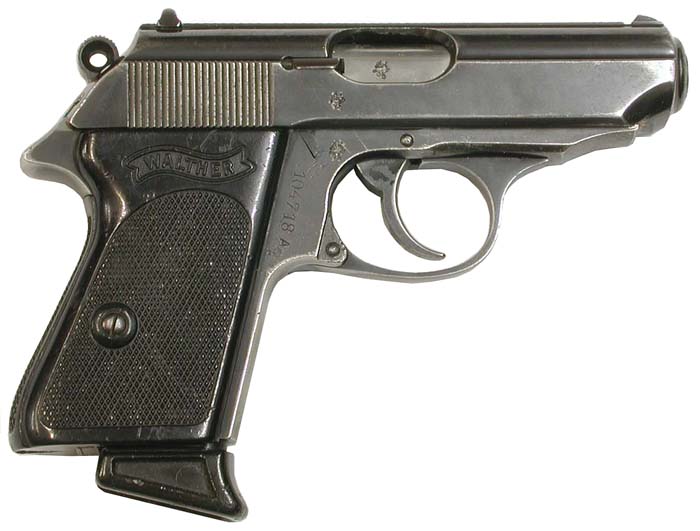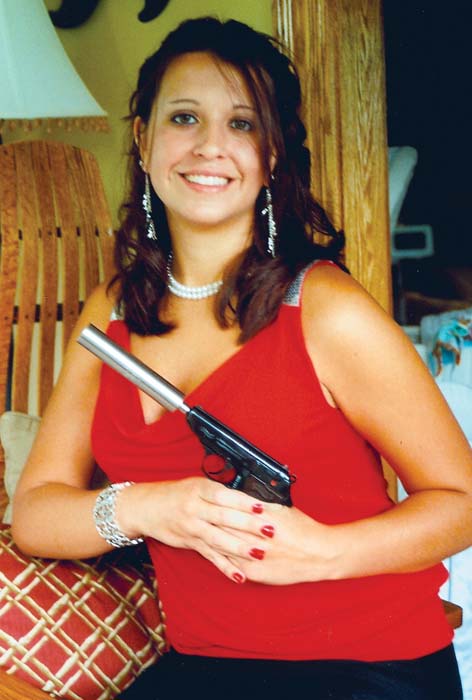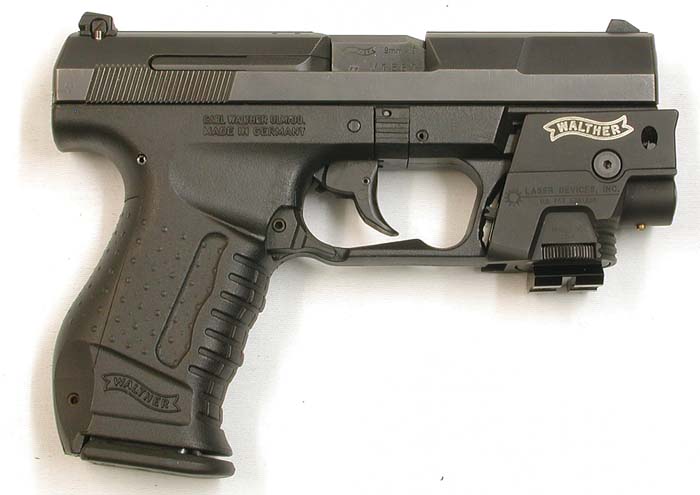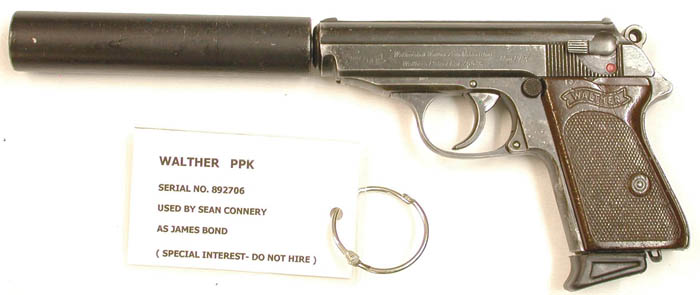By J David Truby
Even suited to the sangfroid of James Bond, the Walther PPK has seen widespread popularity since its design and creation in 1931. Described as the “perfect personal weapon” for detectives, intelligence agents and others of that dangerous near-nether world, the classic PPK has become quite collectible in its past nearly eight decades. These compact pistols have won fans and imitators all over the world.
The PPK is an offspring of the respected German PP semiautomatic police and military pistol. The PP in both models stands for Polizei Pistole, and the K represents Kriminal, which translates from the German to “detective” rather than criminal in English. Designed by Fritz Walther, the PP first came on the market in 1929 as a standard police issue handgun in Germany. Its popularity quickly grew with official adoption and resultant sales.

The PPK was developed two years after the introduction of the PP as a smaller gun designed for use in undercover police and intelligence operations. The PPK retained the mechanical benefits of the PP, but in a far more compact design. The original lineup of PP and PPK models included European 7.35mm, 7.65mm, 9mm Kurtz and the American .22 LR, .25 ACP, .32 ACP, and .380 ACP. However, the 7.35mm, the 9mm Kurtz and the .25 caliber model guns were quickly cut from production.
The PPK chambered a new era of semiautomatic pistol. Although it was not the first double-action semiautomatic pistol on the market, it sure has earned unprecedented acceptance. The Walther design’s quality and success soon convinced police, military and intelligence units from nations worldwide to either adopt the PPK, copy it outright, or use creative inspiration to adapt it to local production, e.g., the Soviet Makarov, the Stetchkin, the Hungarian PA 63, and the Czech CZ 50. In Turkey, the pre-war Walther PPK was manufactured under license for both military and civilian use. The Gestapo preferred the PPK 7.65mm during the Nazi regime of World War II, and specimens from that era bear swastikas on the grip plates. Hitler’s own official carry gun was a 7.65mm PPK, which he used to kill himself in April of 1945.
Because the PPK was readily suited for undercover and intelligence work, it became a worldwide pistol of choice. It was compact, reliable and has good stopping power, so, many of the post-war intelligence agencies standardized the PPK. In addition to the U.K.’s MI5 and MI6, the PPK has been used by German BND, Frances’ SDECE, Israel’s Mossad and Switzerland’s Intelligence and Security Service, as well as by Canada, France and the United States. The Chinese intelligence service actually issued a PPK clone to some of their operatives.

Germany had manufactured both the PP and the PPK models through to the end of World War II. More than 150,000 PPKs were produced in Germany during the course of the war. However, as a result of losing WWII, German ordnance factories went out of business. Because their land was occupied by the Soviets in what would be known as East Germany, Walther quickly fled into the Western zone, where they established a new factory in Ulm producing business machines.
Why no guns? For several years following the war, the Allied powers forbade any manufacture of weapons in Germany. As a result, Walther licensed its gun manufacturing division to the Manurhin plant in the French province of Alsace in 1952. Although some phases of production were resumed in Germany in 1957, after the ban on German gun production was lifted, the Manurhin plant carried a significant portion of PPK production through the mid ’80s. All postwar European-made PPK pistols manufactured through 1986 were manufactured by Manurhin, even though the pistol slide may bear the markings of the Walther factory in Ulm. Walther resumed full production in Ulm in 1986.
Meantime, sales of Walther PPKs soared in the U.S., partly due to government contracts, but, mostly due to the huge popularity of the James Bond movies, in which the PPK was Bond’s official handgun, starting with Dr. No in 1958. Until that time, Bond had carried a rather ladylike Beretta 418.

Geoffrey Boothroyd, a British ordnance expert and author, contacted Ian Fleming in the mid ’50s about Bond needing a “real man’s gun” and the PPK was chosen. In the film, an actor portraying Boothroyd, known in the films as Q, tells Bond and M, his boss, “The Walther PPK. 7.65 mm, has a delivery like a brick through a plate glass window. Takes a Brausch silencer with very little reduction in muzzle velocity. The American CIA swear by them.”
American collectors and even just fans of the Bond films were buying up the PPK handguns. By the mid ’60s, America was by far Walther’s largest market for PPK pistols. However, a major setback to the manufacture and distribution of the PPK came in 1968, when new U.S. Treasury Department requirements for imported handguns left the PPK short – literally. The PPK was a tenth of an inch shy of the new four-inch minimum vertical measurement, and less than an ounce short of the standard’s established by America’s ill-considered Gun Control Act of 1968.
To overcome this new legal barrier to sales in the United States, Walther introduced the PPK/S model with the S standing for “special.” This new design combined the slide, barrel, and spring of the PPK with the larger frame of the original PP model, a change that added slightly more than an ounce of weight, which resulted in a gun that met the new American import laws. Production of the PPK/S began in the 1969.

Later, because U.S. law allowed domestic production of the PPK, Ranger Manufacturing in Alabama was licensed to manufacture the PPK and PPK/S in 1978. The guns were distributed by Interarms. After the death of iconic founder Sam Cummings, Interarms business slipped badly. Umarex, now the corporate parent company of Walther, began discussions with Smith & Wesson’s owners.
Since 2007, Smith and Wesson has been licensed to manufacture the PPK and PPK/S. Also, with the exception of the PP and the new PPK/E model, the United States is the only source for new PPK-type pistols.
Sadly, in 1999, the cinematic Bond had turned in his PPK for a newly issued Walther P99 in the forgettable film, The World is not Enough. Happily, though, many fans, collectors and serious users still covet their own PPKs.
| This article first appeared in Small Arms Review V13N3 (December 2009) |












